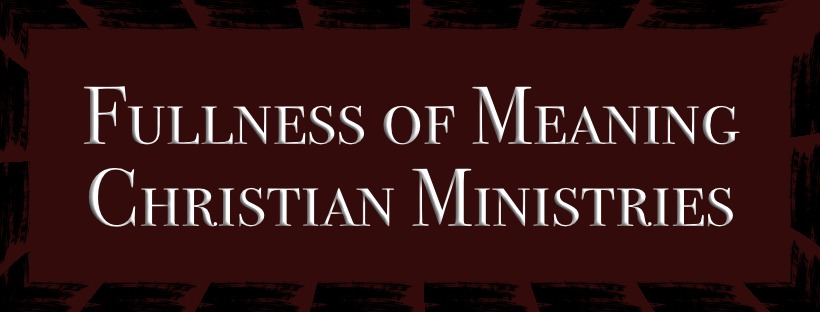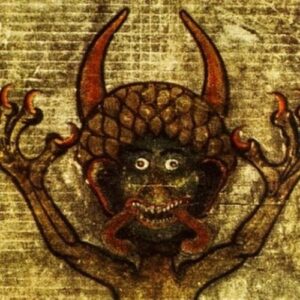The writings at the ending of the 11th all the way into the 13th century exemplify “amour courtois {amur- kurtwa}. This amour courtois or, “Courtly Love” was a medieval European conception emphasizing nobility and chivalry.
Amour Courtois showed Knights going on errands for their “ladies” which showed their courage and their ‘love’ for them — in this particular fashion.
This kind of “Love” was originally a literary fiction created for entertaining the nobility.
Later, “Courtly Love”, as a full bodied idea, took hold as the codex by which Knightly conduct would fashion itself from fiction to fact.
THE SUFFERANCE OF COURTLY LOVE
“Loving Nobly” or “noble love” was considered to be an enriching and improving practice by which the subject was imposed upon. At the same time, this Noble court love in all of its “courtesies (“court—-esy”)” could garner suffering and heartbreak in the medieval allegorical writings.
The allegorical poems of Amour outside amour courtois proved to be deadly. Such is the case for Tristan which means “sad”. Tristian, from the Welsh, “Drystan”; French, triste—‘sad’ and the German, Tristan.
Tristam’s “Paramour”, Iseult, meaning, ‘one who is to be gazed upon’ or ‘fair lady’ has a slightly less interesting title. Iseult was Tristan’s paramour. Paramour meant ‘secret or illicit lover’. In the Latin based French we have, “par = “through” + amour = ‘love’. In this formula, it means, “through the lover…as in the physical sense, not abiding by societal standards. It is this sense of the word that we have “Eros”. In Eros’ original form, the very archaic Greek spelled Eros as Eisrous. “Eis = to go into + Rous = flow as a river to its destruction—-as in, “rui—-for RUIN. The paramours, therefore, through the entrance of their eyes saw what they desired and took their destruction floated out to sea. (One might confer to Platos’ Cratylus for this exact treatment on “Eros”). Nonetheless, they fulfill their roles in their ‘names’ as Paramours.
THE STORY/ THE ALLEGORICAL NAMES/ AMOUR/ DRAMA
In brief, both took a love potion and fell madly in love with each other. Prior to taking the love potion, Tristan was overwhelmed with Iseult and thought it would be good if his beloved uncle, King Mark of Cornwall would marry her. Was they imbibed upon the potion they were inseparable. Iseult, ended up having to marry Mark while Tristan and Iseult were having secret liaisons. The two got caught and much drama ensued.
The errors of courtly love were brought to view in the convoluted sense of two different types of love. Eros and Agape. BOTH of these types of “love” were/are impersonal.
By the end of the 11th century, both erotic love and agape love were to be fused together. Eros was an ‘organ-based’ love while ‘agape’ was a ‘do good to others’ love at your own cost, demeanment, loss, etc.’ love.
LESSON TO BE LEARNED FOR CLASSICISTS, THEOLOGIANS, US —-VIA MEDIEVAL AMOUR COURTOIS
In both cases, “Gamos”, —-an entirely ‘other’ love was overlooked. Gamos, or “marriage”, meant ‘joined’ or ‘union’. In this sense, “Gamos”, was a ‘connecting’ love that entangled not only impersonal sex and impersonal selflessness—but took them and made them personal. Gamos ‘fulfilled’ them to their potential. Gamos made not only a ‘friend (REALLY THE ONLY OTHER ‘LOVE’ NOT ENTIRELY LOOKED AT{philos})’ as well, but a *Comrade* or a ‘fellow measured’ lover. This might be a term that is missed even by today’s standards for the ultimate form of “love” here on earth. Sadly, even my beloved C.S. Lewis didn’t place “Gamos” amongst the ranks of the main forms of “love”.
*Concerning the experience of Gamos we might have an unspoken set of words, or unquantifiable words, now, through ALLEGORY, were spoken in poetical form or sung. Such experience was given to the Medieval by the Troubadour.
The Machinery of allegory used by the Troubadour’s song or poem may always be regarded as a system of conduit pipes which tap the deep and unfailing sources of poetry in the minds of the common folk and noble. Such machinations of ALLEGORY provided and do provide refreshment to those via the Troubadour.
THE UNSPOKEN-SPOKEN WORD—‘MUO’
As a side note, the Proto Indo European language group denotes such a mystical union of ‘sense’, ‘signal’, ‘sign’ to the heart and minds of the commoner and noble via the mimicry or miming of the sense of the unspoken reality. It is in miming that we have a type of this ‘myth’ or ‘mystae’ represented. It is interesting that “mouth, myth, mime, mimicry, mystea and mystery do come from the same ancient Parent. In this understanding, “allegory” is just that sense of “muo”. It is the unquantifiable —which is in the quantifiable language of “allegory”.
Such origins of ALLEGORY began in ancient paganism, not the Middle Ages.
But, it was in the fiction’s entertainment that was later put to real world practice. In this, allegory had been aligned to the real Knight’s errands. Though a Dragon wasn’t what the Knight fought, the Dragon was the world of despair for the Knight that he had to fight through….therefore, “dragon” could allegorically be called “dragon” though understood as the essence of depression.
Inevitable cruelties would come when this fictional world —-with all of its traumas/dramas returned its victories and losses. The harshness of the allegory of the knight’s errand was the ultimate price for Valor. The once fictive allegory would now also take hold onto a new reality that, in turn, had copied that which was fiction. Thus, the title of the HERO must be attempted—— though this all together, another Segway on the “Hero’s journey, a monomyth of epic proportions — it should be known here that “the Name” only exists as ‘that which can fulfill its meaning’. Anyone can carry an appellate, but few can Donne the “authority, name, Hebrew-Shem, or Greek Nomos. Such is the Son of Man and Son of God — in His ‘coming to be’ that NAME.
THE DISTANCE FELT
The main thing that catches me in ALLEGORY is the need to reach from your position on earth to and for a higher language in order that one can ‘signify’ that which cannot be quantified in ordinary speech. The distance is felt—-that is—— the allegorical speech has tethering lines from the ground upwards. (In contrast, not necessarily does “Fantasy” offer this distance between two realities that can both exist in the primary world of real-cold-metrics).
IS THE BIBLE ALSO AN ALLEGORY?
In some ways, I see that in the Bible. That is, many of the “NAMES” had the meaning of their function, therefore, they were the ‘virtues’ of their appellate—-at least for the narrative that they were found in. What isn’t answered is: were they always like their “name”?—-such is the case for King Saul. “Saul” means “blindness, darkness, separation from light, “SHEOL” = “SAUL” = “HELL”. Was King Saul always ‘blind’, ‘in the dark’, ‘in a kind of hell’? —-probably not. But, as I stated, for the narratives read in the Biblical passages, many to most of the time, the names were fulfilled by the action of the characters in the Biblical stories.
An example of ‘name giving’ in the Bible: In 1 Corinthians 11:23-24, Paul the Apostle does not mention Judas by his “appellate” but by his “name”—-paradidomi = “to hand over”. More than anything, this “name” would fulfill the allegorical “name” of Judas by his ‘role’ in the narration. Jesus’ name means, “salvation”, “Peter”, “Paul”, “Matthew”, “devil”, “Satan”, “church”, “eyes of the Lord”, “Seven golden candlesticks”, etc. all either have ‘tethered’ meanings to a bigger sense that just the physical or they fulfill the “name” of their bigger function to its completion in the Biblical narrative.
Is one to call the Bible an Allegorical Historical Theology?—-I don’t know…but I do know that the characters in the Bible who fulfill these virtues are surely fulfilling an allegorical essential.
CONTRAST
*If we remember that FANTASY started in a different or secondary reality and continued its suspension of primary reality without ‘tethering’ to the Primary world, THEN —-I might say, a new reference language is employed to entertain the numinous or hierarchical senses.
This to me is just another way of humankind reaching out to a higher idea, sense, and I say, God. C.S. Lewis was in this camp. The Troubadours were too.
On the other side, I can see J.R.R. Tolkien’s affinity for sub creating—-i.e. participating as a Child of God in his Father in Heaven’s image—-the Creator. This, in one sense, is a very serious role, though Fantasy, the art of writing pure Fantasy would be the effort to be purely honest. I think that Tolkien took his writings to a heightened sense of Christianity——- a place of Freedom in the Rules of the Grace of God. One could call him a Roman Catholic, a Christian and, I believe, an extra-Christian. Tolkien was one who who trusted their Faith to exercise it in the unreal and watch the same creative laws exist. —>For this, I love J.R.R. Tolkien.
For me, both Allegory and Fantasy can be used as an exercise in numinous aesthetics. To touch the Holy, to reach out to the LOGOS and feel HIS Order, His command, His being; to be totally arrested by the nearness of Christ in His purity of any form of art. To see the inner and outer consistencies of reality and unreality.
ADDED HISTORY
As an added history: it was the Provincial troubadour Girhault de Borneilh, who flourished in the middle to the end of the 12th century and epitomized the troubadour ideal.
Borneilh synthesized the 2 traditions of the understanding of Love in the following way:
Borneilh proclaimed that “Love is born of the eyes and the heart. The eyes are the scouts of the heart. They are looking for an appropriate object of beauty; that is to say, they are selective. This is discriminative, this is elite, this is a personal choice, and having found their image, the eyes recommend that image to the heart—-not to just any heart but to the noble heart, the gentle heart, the heart capable of love; this is not a case of sheer lust. When these three meet: that is, the two eyes and the one heart are in accord, LOVE IS BORN. Love is born of the eyes and the heart; it is an individual experience. The eyes quest in the outer world for the object of inspiration, and the heart receives the image, and this image then becomes the idol of individual devotion”.
MY THESIS ON BORNEILH
Borneilh fails to include the conclusive “love”, Gamos, and ends his theme with objectification of one’s interest as ‘the idol of individual devotion’. The eyes are never satisfied, the idol is by Greek terms, ‘the eye which fixes and serves without thought’—hence the word, ‘idiot’, and finally, serving that which one doesn’t or couldn’t possibly know in an objective relationship might be more deadly that just following a court appointed marriage…like in the good old days. Lol




